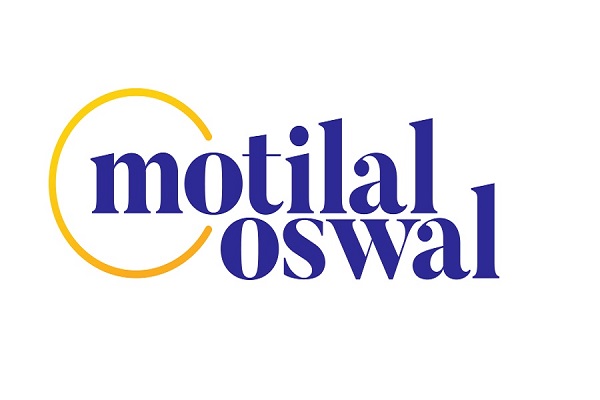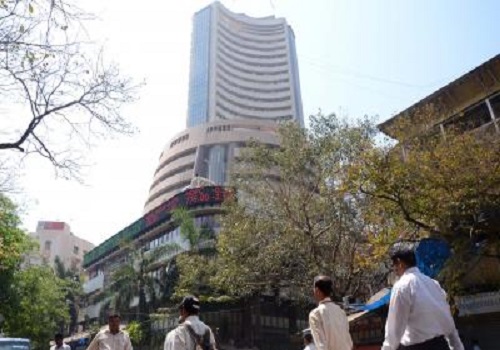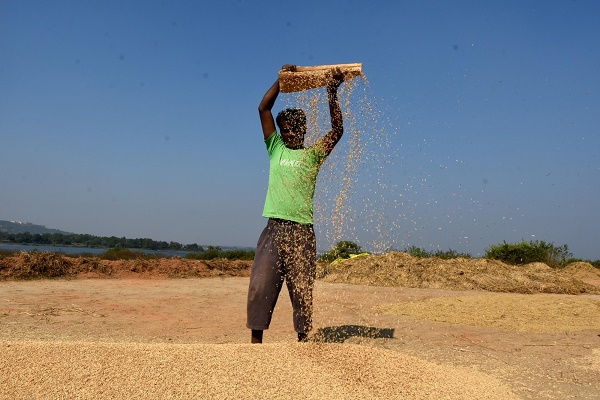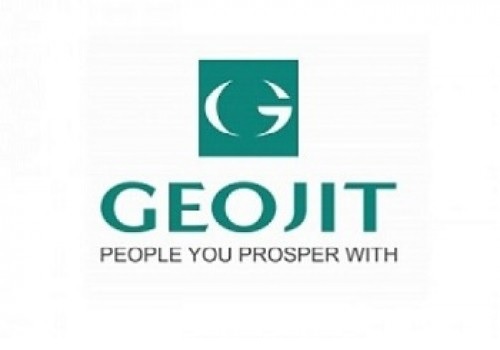Copper trading range for the day is 814.3-847.5 - Kedia Advisory

Gold
Gold prices rose 1.19% to Rs 83,283 as global central banks moved towards looser monetary policies, fueling safe-haven demand. The U.S. imposed tariffs on China, Canada, and Mexico, raising concerns over global economic growth. Markets expect the Federal Reserve to deliver two rate cuts this year, while the Bank of Canada cut its key rate and ended quantitative tightening. The ECB, Swedish Riksbank, PBoC, and RBI also signaled easier policies, boosting market liquidity and gold’s appeal. Speculative activity saw COMEX net long positions decline by 3,766 contracts to 230,592, though deliveries to COMEX warehouses hit 12.9 million troy ounces, the highest since July 2022. In India, gold demand remained weak due to record-high prices, with dealers offering a $35 discount per ounce compared to last week's $38 discount. Trading in China and Hong Kong was muted due to the Lunar New Year holiday, and Swiss gold exports to China plunged 74% in December. Central banks continued to accumulate gold, with emerging markets driving demand. Poland increased its gold reserves by 21 tonnes in November, bringing total holdings to 448 tonnes. The RBI added 8 tonnes in November, lifting its 2024 purchases to 73 tonnes. China expanded its gold reserves for the second consecutive month, reaching 73.29 million fine troy ounces in December. Technically, gold remains in a fresh buying phase, with open interest rising 4.19% to 16,951 contracts. Support is at Rs 82,190, with a break below testing Rs 81,095. Resistance is at Rs 84,050, and a move above could push prices towards Rs 84,815.
Trading Ideas:
* Gold trading range for the day is 81095-84815.
* Gold rose amid a wave of looser monetary policy from major central banks.
* The US imposed 10% tariffs on China and 25% tariffs on Canada and Mexico.
* Markets expect the Fed to deliver two rate cuts this year.
Silver
Silver prices rose 1.12% to Rs 94,257, driven by fears of a global trade war after the U.S. imposed 25% tariffs on Canada and Mexico and 10% on China, prompting retaliatory measures. Investors are now pricing in risks of slower economic growth, higher inflation, and fewer Fed rate cuts, supporting silver’s safe-haven appeal. The Silver Institute projected a fifth consecutive year of market deficits in 2025, as industrial demand and retail investment continue to outpace supply. While global silver supply is expected to rise by 3% to 1.05 billion ounces, a 149 Moz deficit is still anticipated. Industrial fabrication demand is forecast to grow 3%, exceeding 700 Moz for the first time, with strong demand from green economy applications. Physical investment is also expected to rise 3%, particularly in Europe and North America, while jewelry demand is set to drop 6%, mainly due to high prices in India. Silver mine production is projected to reach a seven-year high of 844 Moz, while silver recycling will increase 5%, surpassing 200 Moz for the first time since 2012. Growth in industrial scrap, ethylene oxide catalyst changeouts, and jewelry recycling in India will drive this rise. Technically, silver remains in a fresh buying phase, with open interest rising 8.18% to 24,853 contracts. Support is at Rs 92,410, with a break below testing Rs 90,565. Resistance is at Rs 95,415, and a move above could push prices towards Rs 96,575.
Trading Ideas:
* Silver trading range for the day is 90565-96575.
* Silver gains as fears of a global trade war mounted after U.S. President Trump imposed sweeping tariffs on Canada, Mexico and China.
* US President Donald Trump imposed 25% tariffs on goods from Mexico and Canada and a 10% levy on imports from China.
* Markets are now factoring in heightened risks of global trade disruptions, slower economic growth, and resurgent inflation.
Crude oil
Crude oil prices dipped 0.25% to Rs 6,334 as OPEC+ reaffirmed its gradual output increase and removed the US EIA from its monitoring sources. This move follows ongoing tensions between OPEC+ and former US President Donald Trump, who has renewed calls for increased oil supply to curb high prices. The US decision to impose 25% tariffs on Mexico and Canada and 10% on China added to market uncertainty, as Canada and Mexico supply nearly 25% of US crude imports. US crude inventories rose by 3.463 million barrels, marking the first increase in ten weeks and exceeding expectations of a 3.2 million-barrel build. Gasoline stocks also saw a larger-than-expected rise of 2.957 million barrels, while distillate inventories fell by 4.994 million barrels, surpassing the forecasted 2.1 million-barrel decline. Meanwhile, money managers cut their net long crude positions by 58,347 contracts to 178,008, signaling cautious sentiment. The EIA expects global oil production to average 104.4 million bpd in 2025, up from its prior estimate of 104.2 million bpd, while global demand is revised lower to 104.1 million bpd. US oil production is now forecast to hit 13.55 million bpd this year, with the Permian Basin contributing over half of total US output by 2026. Technically, crude oil is under long liquidation, with open interest dropping 17.81% to 5,338 contracts. Support is at Rs 6,242, with a break below potentially testing Rs 6,149. Resistance is at Rs 6,474, and a move above this level could push prices towards Rs 6,613.
Trading Ideas:
* Crudeoil trading range for the day is 6149-6613.
* Crude oil dropped after OPEC+ reaffirmed its gradual output increase.
* OPEC+ removed the US EIA from its list of sources for monitoring production.
* Russia’s Deputy PM Novak tells committee OPEC+ should stick to policy
Natural gas
Natural gas prices jumped 9.13% to Rs 291.7 as forecasts indicated colder weather and higher heating demand next week. Additionally, concerns over Canadian supply disruptions due to Trump’s new tariffs added to market strength. U.S. gas output in the Lower 48 states rose to 105.7 bcfd in early February, up from 102.5 bcfd in January, recovering from freeze-offs that had cut production. However, daily output declined to 105.4 bcfd, down from an 11-month high of 106.1 bcfd on Friday. Goldman Sachs estimated that Canadian exports to the U.S. could drop by 0.16 bcfd due to these tariffs. The EIA reported a massive gas withdrawal of 321 bcf, exceeding market expectations of 313 bcf, driven by extreme cold. This brought total inventories down to 2,571 bcf, making storage 5.3% lower year-on-year and 4.1% below the five-year average. The South Central region led withdrawals (-136 bcf), followed by the Midwest (-83 bcf) and East (-61 bcf). This marks the fourth time in history that weekly withdrawals surpassed 300 bcf, though it remained below the 2018 record of 359 bcf. The EIA expects record U.S. gas output and demand in 2025, projecting 104.5 bcfd production, while LNG exports are forecast to rise to 14.1 bcfd. Technically, natural gas is under short covering, with open interest dropping 32.78% to 12,299 contracts. Support is at Rs 276, with a break below testing Rs 260.4. Resistance is at Rs 303.2, and a move above could push prices towards Rs 314.8.
Trading Ideas:
* Naturalgas trading range for the day is 260.4-314.8.
* Natural gas jumped on forecasts for colder weather and higher heating demand next week.
* Support also seen on worries about supplies from Canada related to U.S. President Donald Trump's sanctions.
* Average gas output in the Lower 48 U.S. states rose to 105.7 bcfd so far in February, up from 102.5 in January
Copper
Copper prices rose 0.94% to Rs 835.8, supported by Rupee weakness, despite pressure from U.S. President Donald Trump's new tariffs on Chinese imports. This move heightened trade war concerns, with China vowing to challenge the tariffs at the WTO and announcing countermeasures. Additionally, Trump signaled potential tariffs on European goods, steel, aluminum, copper, and semiconductors, adding further market uncertainty. In China, an unexpected contraction in January’s manufacturing activity raised concerns about demand from the world’s largest copper consumer. On the supply side, Freeport-McMoRan missed its Q4 production targets and warned of a significant drop in Q1 output. Chile also lowered its long-term copper production forecast to 5.54 million tons by 2034, down from 6.34 million tons. Meanwhile, China’s unwrought copper imports rose 17.8% YoY in December to 559,000 metric tons, indicating strong restocking by refiners. However, the global refined copper market showed a deficit of 131,000 metric tons in November, widening from 30,000 metric tons in October, according to the International Copper Study Group (ICSG). Technically, copper is in a fresh buying phase, with open interest rising by 0.84% to 6,258 contracts. Support is at Rs 825.1, with a break below potentially testing Rs 814.3. Resistance is at Rs 841.7, and a move above this level could push prices toward Rs 847.5.
Trading Ideas:
* Copper trading range for the day is 814.3-847.5.
* Copper gained as weak Rupee supported after pressure seen as U.S. President's 10% tariff on imports from China.
* China said it would challenge Trump's move at the World Trade Organization and take other countermeasures.
* The Caixin China General Manufacturing PMI stood at 50.1 in January 2025, less than market consensus.
Zinc
Zinc prices rose 1.83% to Rs 267.15, supported by supply concerns as global mined zinc production declined for the third consecutive year in 2024. This was further impacted by a 7% drop in China’s refined zinc production, driven by lower processing rates. Additionally, the Red Dog Mine in Alaska, the world’s largest zinc mine, is expected to slow output in 2025, adding to supply worries. Further support came from the ongoing decline in LME-registered zinc inventories, which hit their lowest levels since February 2024. On the demand side, China's manufacturing sector saw an unexpected contraction in January, despite optimism about credit-driven growth. Meanwhile, the global zinc market recorded a 52,900 metric ton deficit in November, narrowing from 65,400 metric tons in October, according to the ILZSG. For the first 11 months of 2024, the global zinc market faced a 33,000-ton deficit, a sharp contrast to the 312,000-ton surplus in 2023. However, China’s refined zinc production increased in December by over 1% month-on-month, and further growth of 3% MoM is expected in January 2025 due to maintenance recoveries and production boosts in multiple regions, despite some seasonal cuts. Technically, the market is witnessing short covering, with open interest dropping by 11.92% to 3,393 contracts. Support is at Rs 261.7, with a break below potentially testing Rs 256.1. Resistance is at Rs 270.3, and a move above this level could push prices toward Rs 273.3.
Trading Ideas:
* Zinc trading range for the day is 256.1-273.3.
* Zinc gains amid supply concerns as global mined zinc production fell for the third consecutive year in 2024.
* Output from the world’s largest mine, the Red Dog Mine in Alaska, is due to slow in 2025.
* Support also seen amid continuing decline of inventories in the LME-registered warehouses.
Aluminium
Aluminium prices rose 1.4% to Rs 253.45, driven by the European Union’s plan to phase out Russian aluminium imports over a year, with a 275,000 metric ton exemption during this period. The U.S. Federal Reserve’s decision to hold interest rates steady also impacted market sentiment, delaying expectations of rate cuts. Meanwhile, China’s markets remained closed for the Lunar New Year until February 5, limiting immediate trading activity. On the supply side, global primary aluminium output rose 3% YoY to 6.236 million tons in December, as per the International Aluminium Institute (IAI). China, the world’s largest producer, reached record-high annual production of 44 million tons in 2024, approaching its government-imposed cap of 45 million tons set in 2017 to control excess supply and carbon emissions. China’s December aluminium output rose 4.2% YoY to 3.77 million tons, though daily production fell 1.7% from November due to cost pressures. Additionally, Chinese producers faced average losses of 687 yuan per ton, marking the first industry-wide losses in three years, according to Antaike research. Technically, the market is witnessing fresh buying, with open interest increasing by 2.78% to 3,803 contracts. Support is at Rs 249, with a break below potentially testing Rs 244.5. Resistance is at Rs 256.1, and a move above this level could push prices toward Rs 258.7.
Trading Ideas:
* Aluminium trading range for the day is 244.5-258.7.
* Aluminium gains as EU’s proposed ban on Russian aluminum raises market concerns
* Aluminium stocks at three major Japanese ports rose to 323,600 metric tons by the end of December, up about 13.2%.
* The main markets in China are closed for the Lunar New Year holiday until Feb. 5.
Cottoncandy
Cottoncandy declined by 0.21% to Rs 53,490 due to an upward revision in crop estimates by the Cotton Association of India (CAI). The association increased 2024-25 cotton output estimates by 2 lakh bales to 304.25 lakh bales following higher-than-expected production in Telangana, which rose by 6 lakh bales to 42 lakh bales. However, North India saw a 3.5 lakh bales decline in production. Additionally, global cotton production for 2024-25 is projected to rise by 1.2 million bales to 117.4 million bales, led by India and Argentina. Brazil's cotton forecast was lowered to 3.79 million tonnes due to a decline in acreage in Mato Grosso. Cotton arrivals in Punjab, Haryana, and Rajasthan have declined 43% year-on-year till November 30, causing supply concerns. Farmers are holding back stock, anticipating higher prices, while ginners and spinners face raw material shortages. Cotton yarn prices in South India have increased due to rising garment industry demand and strong export orders, providing some price support. CAI also revised domestic consumption higher by 2 lakh bales to 315 lakh bales, reflecting stronger demand. As of January 22, market arrivals stood at 156 lakh bales, surpassing half of the projected 304.25 lakh bales crop size. Technically, fresh selling is observed as open interest increased by 2.68% to 268 contracts. Support is at Rs 53,270, with a break below potentially testing Rs 53,050. Resistance is at Rs 53,740, and a move above this could push prices toward Rs 53,990.
Trading Ideas:
* Cottoncandy trading range for the day is 53050-53990.
* Cotton dropped as CAI has revised upwards its crop projections by 2 lakh bales from its earlier estimates
* Brazil's 2024-25 cotton production forecast was revised down to 3.79 million tonnes
* Global cotton production is projected to rise by more than 1.2 million bales to 117.4 million bales.
* In Rajkot, a major spot market, the price ended at 25251.1 Rupees dropped by -0.06 percent.
Turmeric
Turmeric declined by 0.51% to Rs 13,206, pressured by weak demand and an increase in arrivals. With harvesting progressing steadily, more crop is expected to arrive in the market within the next month, keeping prices under pressure as buyers struggle to absorb the supply. Arrivals surged to 13,190 bags, almost double the previous session’s 6,780 bags, particularly in key markets like Nizamabad and Hingoli. However, crop yields are expected to be 10-15% lower, especially in the Nanded region, due to smaller rhizomes and instances of crop rot, which could provide some support to prices in the coming weeks. On the trade front, turmeric exports increased by 9.80% to 121,601.21 tonnes during April-November 2024, compared to 110,745.34 tonnes in the same period of 2023. However, November exports dropped by 20.18% month-on-month but showed a 48.22% rise year-on-year. Meanwhile, imports surged by 101.80% during April-November 2024, reaching 18,937.95 tonnes, though November imports dropped by 34.84% compared to October. In Nizamabad spot market, turmeric prices gained 0.28% to Rs 13,372.85. Technically, the market is under long liquidation, with open interest falling by 0.08% to 11,935 contracts, while prices declined by Rs 68. Immediate support is at Rs 13,100, with a break below possibly leading to Rs 12,994. On the upside, resistance is at Rs 13,330, and a move above this could push prices toward Rs 13,454.
Trading Ideas:
* Turmeric trading range for the day is 12994-13454.
* Turmeric dropped on weak demand and marginal improvement in arrivals.
* As new crop continues to arrive, arrivals are expected to remain high.
* With the arrival of new crop likely to increase after Makar Sankranti, supply is expected to increase.
* In Nizamabad, a major spot market, the price ended at 13372.85 Rupees gained by 0.28 percent.
Jeera
Jeera gained 0.45% to Rs 21,195, supported by low-level buying after a recent price decline due to weak domestic demand. Current stock availability remains sufficient, with farmers holding around 20 lakh bags, out of which only 3-4 lakh bags are expected to be traded before the season ends, leaving a carry-forward stock of approximately 16 lakh bags. Production for 2023-24 is estimated at 8.6 lakh tonnes, significantly higher than the 5.77 lakh tonnes last year, thanks to favorable crop conditions and expanded sowing. However, downside pressure remains limited due to a shortage of available stocks for immediate trade. On the export front, India’s jeera exports surged 74.04% to 1,47,006.20 tonnes during April-November 2024, compared to 84,467.16 tonnes in the same period last year. While November exports fell by 28.92% month-on-month, they still posted a 42.67% year-on-year rise. India remains the most competitive supplier, with cumin prices at $3,050 per tonne, significantly lower than Chinese cumin, which is $200-$250 higher. Ongoing Middle East tensions have also boosted export orders from Gujarat, along with increased demand from Europe and other regions ahead of festive seasons. In Unjha, a key spot market, jeera prices slightly declined by 0.02% to Rs 21,514.5. Technically, the market is witnessing short covering, with open interest dropping by 4.79% to 2,385 contracts, while prices rose Rs 95. Immediate support is at Rs 20,950, with a break below potentially testing Rs 20,690. On the upside, resistance is at Rs 21,420, and a move above this could drive prices toward Rs 21,630.
Trading Ideas:
* Jeera trading range for the day is 20690-21630.
* Jeera gains on low level buying after prices dropped as demand is low
* However, only 3-4 lakh bags are expected to be traded by the end of the season, leaving a carry-forward stock of about 16 lakh bags.
* The current season is expected to have similar production levels as last year due to better crop conditions and good sowing.
* In Unjha, a major spot market, the price ended at 21514.5 Rupees dropped by -0.02 percent.
Views express by all participants are for information & academic purpose only. Kindly read disclaimer before referring below views







.jpg)














